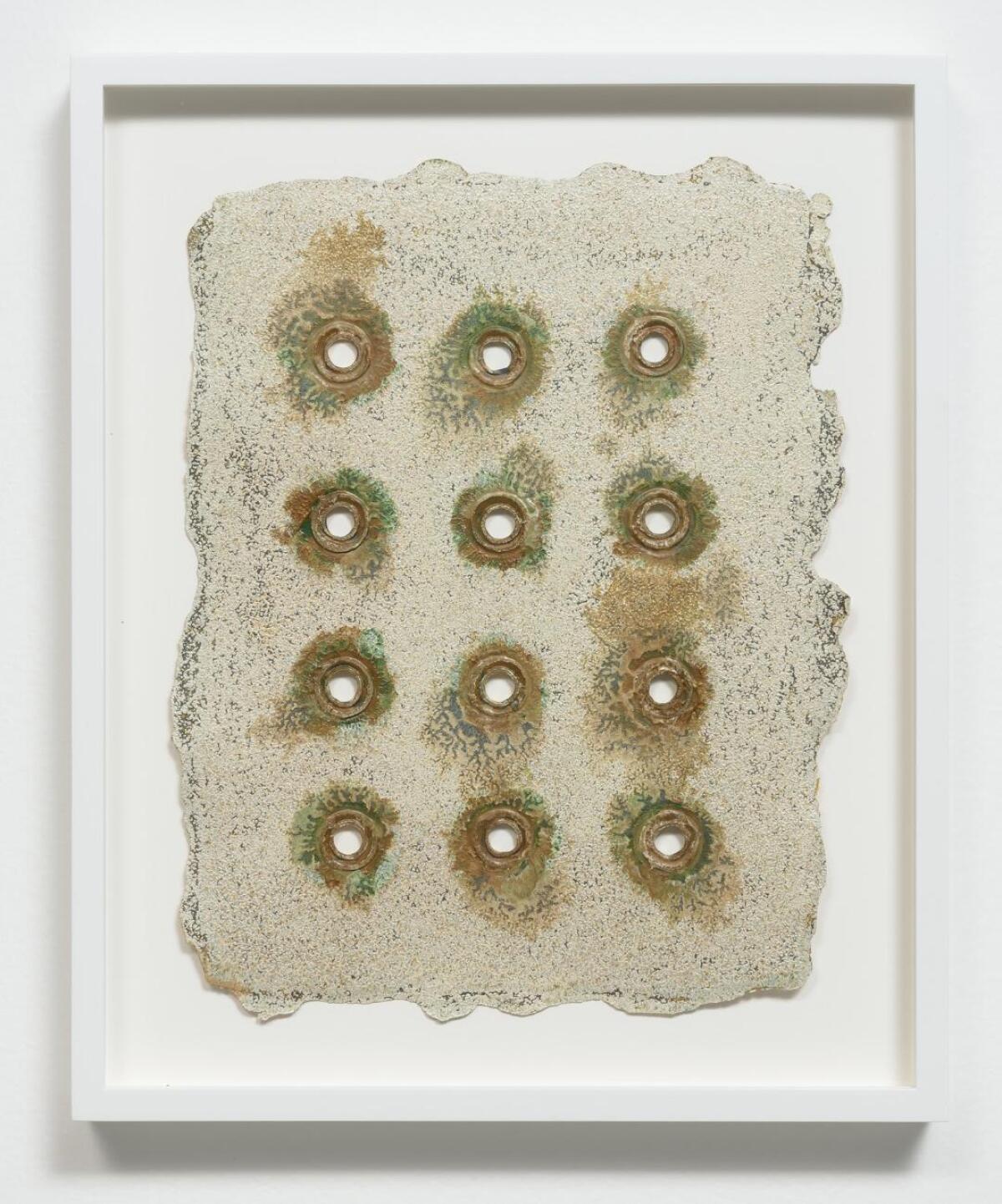Review: Harmony Hammond: Boundary-breaking work with a story on its surface
What you see, and how you see, Harmony Hammond's engrossing show closing soon at Susanne Vielmetter Los Angeles Projects depends on your angle of approach — not so much the physical angle as the temporal one.
Enter through the past and you're likely to regard the work in terms of Hammond's early dismantling of barriers between painting, sculpture and craft, as in her landmark "Floorpieces" of the early '70s, rag rugs she braided and painted. You're apt to consider her long, luminous history as a champion of female, feminist and lesbian visibility in the art world through her writings, her co-founding of a women's gallery and her own formidable example.
Enter through the present and what you'll discover are captivating works richly informed by 20th century art history but sensually immediate, and relevant to the moment. The five large canvases (all 2016-’17) are layered with planes of fabric and painted all over in tones of yellowed paper, pale wheat, dirty eggshell. The paint rests uneasily on these surfaces. It seeps into burlap's coarse weave and the fuzzy nubs of other fabrics, and it dries to a heavy crust. Fragments of cloth pucker and protrude in low relief. Loose threads dangle from raw edges. Other threads, stiffened by paint, jut out like tiny wires or branches.

SIGN UP for the free Essential Arts & Culture newsletter »
Splits in the fabric layers reveal, as if peeled-back skin, glimpses of dark blood red. Grommets pierce the fields. Bodily allusions abound: small open mouths, pustules, nipples, tough hides. The grid, in all of its postminimal imperfection, recurs throughout. Crisscrossing straps invoke restraint, but also protection.
There is a private archaeology at work here, a stratification of action and reaction. The pieces are embedded with the physical memory of their making. Lee Bontecou and Alberto Burri are clear touchpoints, and Robert Rauschenberg as well. Also brought to mind, though less obviously linked, are the intimate collages of Hannelore Baron — material, domestic diaries of trauma and survival.
Hammond, based in New Mexico since 1984, is a printmaker too. Three modest-size monotypes here share with the paintings a surface that’s legible more as terrain than image. Each has rugged edges and a dozen grommets punctuating the paper in a slightly irregular grid. The sheets look like ancient texts, corroded shields or the residue of some sort of geological phenomena. Their hues run toward soil, lichen and rust. Like the assemblage paintings, they suggest both rupture and endurance. Their appeal, too, is visceral.

Susanne Vielmetter Los Angeles Projects, 6006 Washington Blvd., Culver City. Closes Saturday. (310) 837-2117, www.vielmetter.com
See all of our latest arts news and reviews at latimes.com/arts.
MORE ART:
Machine Project is closing its doors
Contested art and artifacts from Japanese American internment camps go on view
What's next for the Getty's Pacific Standard Time? This critic has an idea
UPDATES:
For the Record
The caption for the third artwork displayed here has been corrected.
The biggest entertainment stories
Get our big stories about Hollywood, film, television, music, arts, culture and more right in your inbox as soon as they publish.
You may occasionally receive promotional content from the Los Angeles Times.







